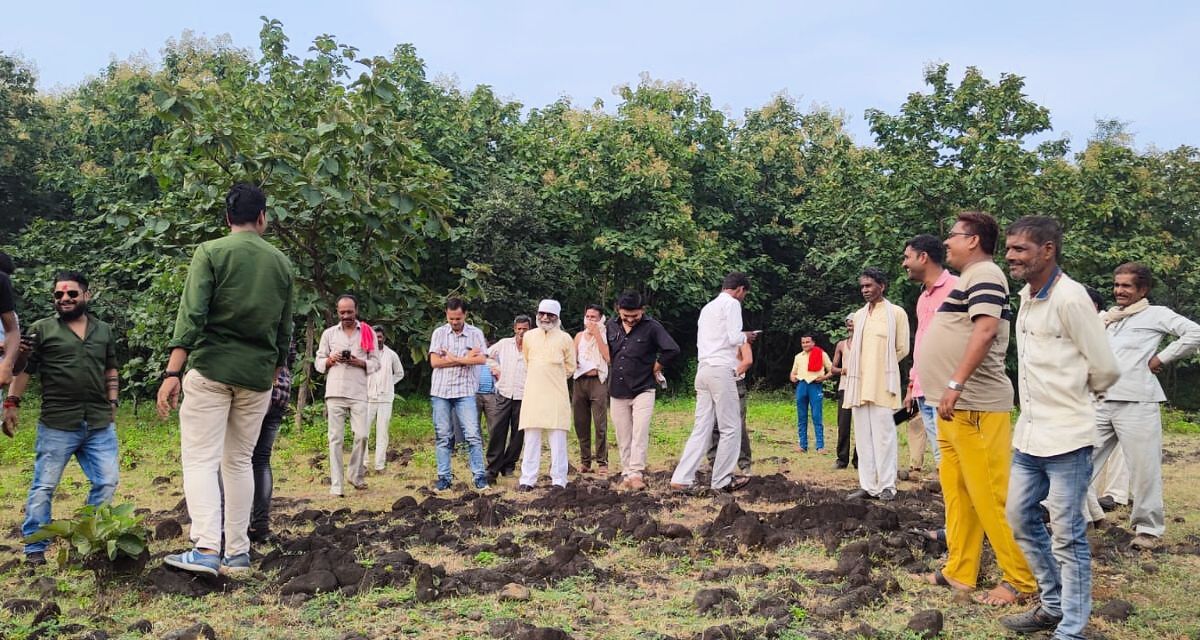
views
Spread across over a thousand acres of hillsides near the villages of Manegaon and Dungariya in Madhya Pradesh’s Sagar district is a lush green wood that was once a stretch of barren land. The 1,030-acre forest was raised lovingly by locals from the two villages in Deori tehsil, who tended to and watered the young tree saplings for 20 years, watching them grow into adult trees that they are very proud of today.
The forest, in return, has given them back manyfold, including resolving the water scarcity in the area.
The initiative started thanks to the Indian Farmers Fertiliser Co-operative (IFFCO), a multi-state cooperative society engaged in the manufacturing and marketing of fertilisers. On October 12, 1998, as part of a pilot project, IFFCO planted two lakh trees on a stretch of a barren hillside to develop a forest, meant to provide employment and fuel for locals. The project was funded by Indo-Canadian Environment Facility and the villagers were given a stipend of Rs 5,000 a month to help them care for the young forest. But once the ICEF funding ran out in 2002, the villagers were left to their own devices
Within a few months, the new saplings were almost dead and the villagers decided to step in to protect them from human and animal interference.
A labour of love
Rajnish Mishra (56), a local farmer and social worker who exhorted the villagers to take care of the trees, said, “The saplings that IFFCO planted here almost died as they were delicate and needed a lot of care and irrigation, but miraculously, they revived when we prevented human activities and cattle-grazing here. Gradually, the native trees’ roots started sprouting again and today this forest has numerous trees, 70 per cent of it being sagwan (teak).”
“These trees are like my children. When the forest was young and the trees were hardly 3-4 years old, I got a call from a local saying someone was chopping down the trees and stealing wood without informing us. Back then, IFFCO used to give us funds to look after the forest. So, I ran to catch the thief, but on the way there I realised that our aim to develop the forest had emerged from our selfish motive of capitalising on forest produce, which really shocked me,” Mishra explained.
He then resolved to protect the forest for posterity and not to make money, and asked the other villagers to do the same. “Almost 20 years later now, we have never collected wood, nor forest produce. We all just serve the forest to pass it on to our children,” he added.
Anand Dixit of Deori, another social worker who is very active in the conservation efforts, recalled how the locals together worked tirelessly on the barren land. “The hills are right next to the Nauradehi Wildlife Sanctuary. They used to lie barren, without any kind of vegetation until two decades ago, but now it is a breathtakingly beautiful area. The forest is also home to various species of reptiles like snakes and lizards, rabbits, deer, hyenas, wild boars, leopards and various species of birds,” Dixit added.
While Mishra has invested thousands of rupees from his own pocket to protect the forest from animals by building fences, paying labourers to clear out leaves and dry grass etc., other villagers serve the forest in kind.
“It is a big jungle so it is not possible for two or three people to look after it alone. So, the locals have divided the areas into groups. Also, people of different communities have united for this one goal of protecting the trees,” he added. Dixit echoed his words, saying that “while other villages struggle with caste issues, here members of the Lodhi, Thakur, Brahmin and tribal communities work together”.
Ganpat Thakur, Ratiram Baba, and Makhan Lodhi are three of the seven most active villagers who ensure the safety of the forest, Dixit further told 101Reporters.
“The locals go to check upon the forest twice a day. They create fences around new saplings and protect the trees from trespassers. Thakur has four dogs who warn us if any outsider tries to enter the forest without our knowledge,” he said.
The forest pays back

While the locals remained content to just witness it grow wild and dense, they observed that water shortage in the area was becoming less intense as the trees were growing taller. Within the 15 km radius around the forest, the groundwater has slowly recharged over these two decades.
“Most villagers here are small-scale farmers. Earlier, they had to dig 200-250 feet deep borewells to get water for their crops and for daily use. All the wells and ponds would go dry and there were just one or two handpumps that still supplied water. But now, people find water just 15 to 20 feet below the earth, a maximum of 25 feet! This all happened in the last 20 years,” Mishra marvelled.
A regular rain cycle has also developed in the area around the forest, making the region cooler and giving rise to small ponds nearby.
“In the nearby areas and in the forest itself, there is regular rain. An old pond near the forest which had dried up earlier now stores plenty of water. It is all very beautiful and cool as opposed to the hot barren land that we used to see earlier,” he added.
Even today, the forest continues to grow as new seeds take root in the fertile soil, said Mishra. “We see new shoots coming up as birds and animals scatter seeds of the trees. We have teak, babul, sheesham and many other varieties of trees here. They are all growing tall and strong.”
Appreciating the efforts of the villagers, Deori range officer Raghvendra Singh Bhadoria said, “It is a commendable effort by the villagers. They have appointed a guard for the protection of the forest and are doing incredible work. They should be rewarded. We need more community effort like this to reverse the negative impact of human activities and restore nature’s balance.”
Bhadoria has asked Mishra for land records to confirm if the forest falls under the forest department or is revenue land. “We cannot say for sure whether the forest belongs to the forest department without looking at the papers. If it is under forest area, we will do everything to protect the jungle like the villagers have done so far,” he said.
The villagers have vowed to keep serving the forest selflessly and pass it on to posterity. They are also making their children aware of the importance of the woods in the hope that they too will take care of it for future generations.
(The author is a Bhop-based freelance journalist and a member of 101Reporters, a pan-India network of grassroots reporters.)
Read all the Latest India News here




















Comments
0 comment